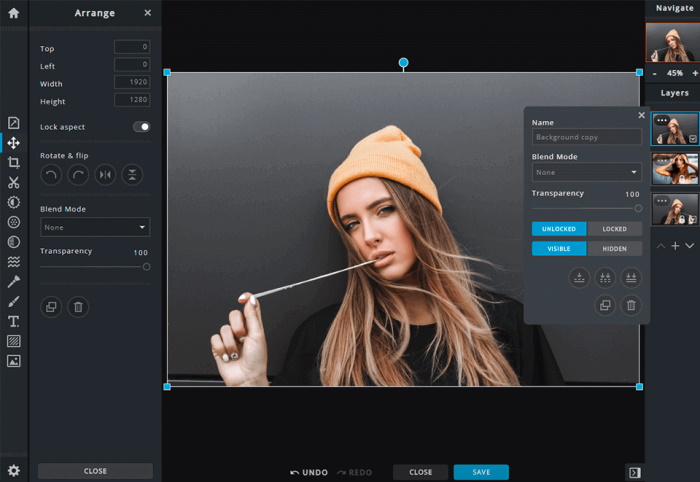

There are a number of filters to select from. We like our images to be as true to the original as possible, but there are times when you need a little creativity to really bring out what you need from an image. Finding a complementary color for your image is very easy. The color select palette is a joy to use – easy to select colors by HSL, RGB, Web, or a slick IMG palette that selects colors from the loaded image. We liked the red eye removal tool and found it easy to use on photos. You have a standard set of image editing tools such as crop, marquee, lasso, pencil, brush, and so forth. You can also moved the palettes around to suit your needs. On the right, you have your navigator, layers, and history palettes. On the left, you have a tool palette to cover editing functions. At the top, you have a series of menus to perform the functions you come to expect from a mid-level image processing application. The interface is very easy to use – you will likely pick it up very quickly as it is like most software applications.

In some ways, it’s faster than some of our desktop image editing programs. We were amazed at how responsive the interface is in Pixlr. We chose to open a spring picture to check out the features of the online software tool. When you first open Pixlr, you see a screen to create a new image, or open one. In all, there are 28 different filters you can use on your photograph. It contains image adjustment tools such as brightness, contrast, color balance, and filters including blurring, pixelating, vignette, pastel, emboss, engrave, and many more.
#PHOTO PIXLR FULL#
Pixlr is a full featured image editing and post transformation tool.


 0 kommentar(er)
0 kommentar(er)
